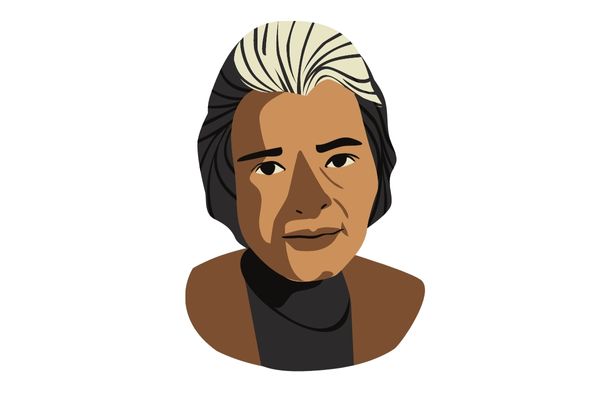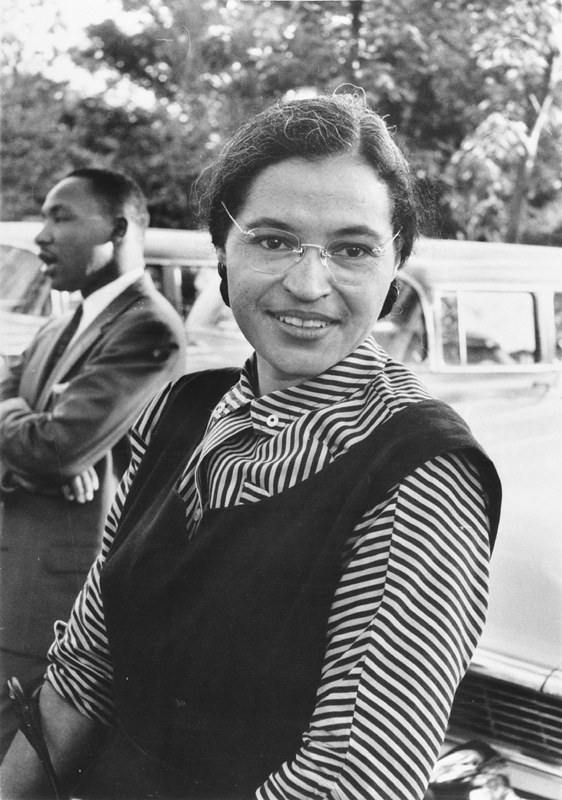Rosa Parks Facts For Kids
Everyone should be treated fairly. No matter where you’re from, what religion you practice, where you work, what language you speak, or whether you’re a guy or a girl. Unfortunately, this isn’t always the case, and many individuals suffer because of discrimination and bias.
However, some remarkable people did impressive things in the struggle for equality. Rosa Parks, a civil rights leader, was one such figure. Rosa Parks was a significant character in the Civil Rights Movement when she publicly refused to concede her bus seat to a white passenger.

Also Read: Civil Rights In the US
About Rosa Parks:
- Name: Rosa Louise McCauley Parks
- Also known as: The first lady of Civil Rights
- Date of Birth: February 4, 1913
- Native place: Tuskegee, Alabama, USA
- Occupation: Civil rights activist
- Death: October 24, 2005
- Well known for: The Montgomery Bus Boycott
Early life
Rosa was born in the town of Tuskegee, Alabama, a southern state in the United States. Her dad was a carpenter, and her mom was a teacher. She had a younger brother named Sylvester. Rosa and Sylvester went to Montgomery, Alabama’s capital city, with their mother after her parents divorced when she was a little child. Rosa married a barber named Raymond Parks when she was 19 years old, and he urged her to continue to high school to acquire an education degree.
Educational Qualification

When she was 11, Rosa Parks transferred from the rural school at Pine Level to the Montgomery Industrial School for Girls. She afterward attended a secondary education experimental school administered by the Alabama State Teachers College. But she skipped class to care for her ailing mother and grandmother in Pine Level. After her marriage, she eventually earned her high school graduation in 1934.
The story behind the Montgomery Bus Boycott
Rosa was the catalyst on December 1, 1955. She boarded the bus home after a long day at work and grabbed a seat. Seats toward the front of buses were intended for white passengers during the time, while seats in the back were assigned for black passengers.
When a white guy entered the bus, the driver urged the African American passengers to sacrifice their seats for him. Rosa did not comply with the other black passengers. The result? Rosa was arrested and jailed for violating segregation rules! Rosa refused to pay, saying that the rule was incorrect, not her actions.
Montgomery Bus Strike

When word of Rosa’s arrest reached Montgomery, black residents gathered together and resolved to boycott the city’s buses in protest. This meant that African Americans refused to ride buses starting on December 5, 1955, the date of Rosa’s trial. The Montgomery Improvement Association oversaw the boycott, which Dr. Martin Luther King Jr. was chosen to lead.
The demonstration was quite successful, with more black individuals joining than planned. And, because African Americans made up around 70% of bus customers, the city’s transportation services began to struggle.
However, it was not an easy demonstration for black folks. Because many of them didn’t have vehicles, they had to share or walk vast distances to reach where they wanted to go. Moreover, white people were outraged by the boycott and retaliated with violent and hazardous acts of violence.
Yet, the demonstrators remained together and battled for their cause, and on November 13, 1956, their efforts were eventually rewarded. After 381 days of bus boycotting, the Supreme Court determined that Alabama’s racial segregation laws were unconstitutional, which meant they were invalid and should not be recognized.
Rosa is hailed as the mother of the civil rights movement due to her incredible win. The Montgomery Bus Boycott persisted for 381 days until coming to a conclusion when the city’s segregation legislation was overturned.
The legacy of Rosa Parks
Despite their success, Rosa and her fellow activists’ lives were not easy following the boycott. To avoid further violence and threats from furious white organizations, Rosa and Raymond relocated to Detroit, which is a city in the northern US state of Michigan, to live with Rosa’s brother.
There, she continued to advocate for civil rights and to assist individuals who faced prejudice and injustice. She continued to support the NAACP and various civil rights activities. She co-founded the Rosa and Raymond Parks Center for Self Development in 1987 in Detroit to provide job training for young people.
Rosa Parks Memorial Day

Rosa Parks Day is observed each year on February 4, her birthday. Schools and institutions worldwide will study Rosa Parks’s role in the Movement for Civil Rights for Black Americans on this day.
Rosa Parks Day is also observed on December 1, the anniversary of her arrest.
The first woman to get a Presidential award
Rosa won the Presidential Medal of Freedom in 1996 and the Congressional Gold Medal in 1999 for her bravery, fortitude, and outstanding efforts for civil rights.
How did Rosa Parks pass away?
Rosa died naturally on October 24, 2005, at the age of 92. But she is still considered to be a symbol of liberty and equality across the world. On the day of Parks’ funeral, President George W. Bush issued an order mandating that all flags flown over public spaces in the United States be lowered to half-staff. Today, memorial monuments stand in her honor, reminding us of her outstanding achievements that cannot be ignored.
Also Read: Fifteenth Amendment Facts
10 Fascinating Rosa Parks facts

- Parks was a hostess at an inn at Hampton Institute in 1957.
- Rosa graduated from high school at a period when fewer than 7% of African Americans did.
- Rosa Parks had been a civil rights fighter. 12 years earlier, she refused to hand over her seat to a white passenger.
- She had refused to give up her seat when the bus driver, James Blake, intentionally drove off without her.
- Rosa Parks was not the first passenger to object to giving up her seat on a city bus in Montgomery. The first person detained for refusing to sacrifice her seat was 15-year-old Claudette Colvin, and Parks was active in gathering money for Colvin’s defense.
- When Parks resisted giving up her seat, she was not physically exhausted. She said in her explanation that she was tired of giving in.
- In addition to serving on the board of Planned Parenthood, Rosa Parks was elected president of the Alabama State Conference of the NAACP.
- Martin Luther King Jr. discussed the significance of Rosa Parks in serving as a catalyst for the demonstrations and a focal point for people fed up with the social inequities of segregation.
- The play Walk On: The Story of Rosa Parks demonstrates how each person’s willpower contributes to freedom and equality for everyone through music and theater.
- On the 50th anniversary of Rosa’s arrest, vacant bus seats were left in New York City, Washington, D.C., and other locations to pay tribute to Rosa and the outcomes of her civil disobedience.
Also Read:
Conclusion
After reading all of these Rosa Parks facts, you may now wish to embrace Rosa Parks’ views, because why not? She was a strong woman who battled for justice. She made a difference in the lives of countless black African Americans. She will be recognized as a one-woman army that brought about revolutionary change. Rosa Parks’ life narrative will educate your youngster on African-Americans’ struggles. It will teach children important lessons about equality and empathy.
